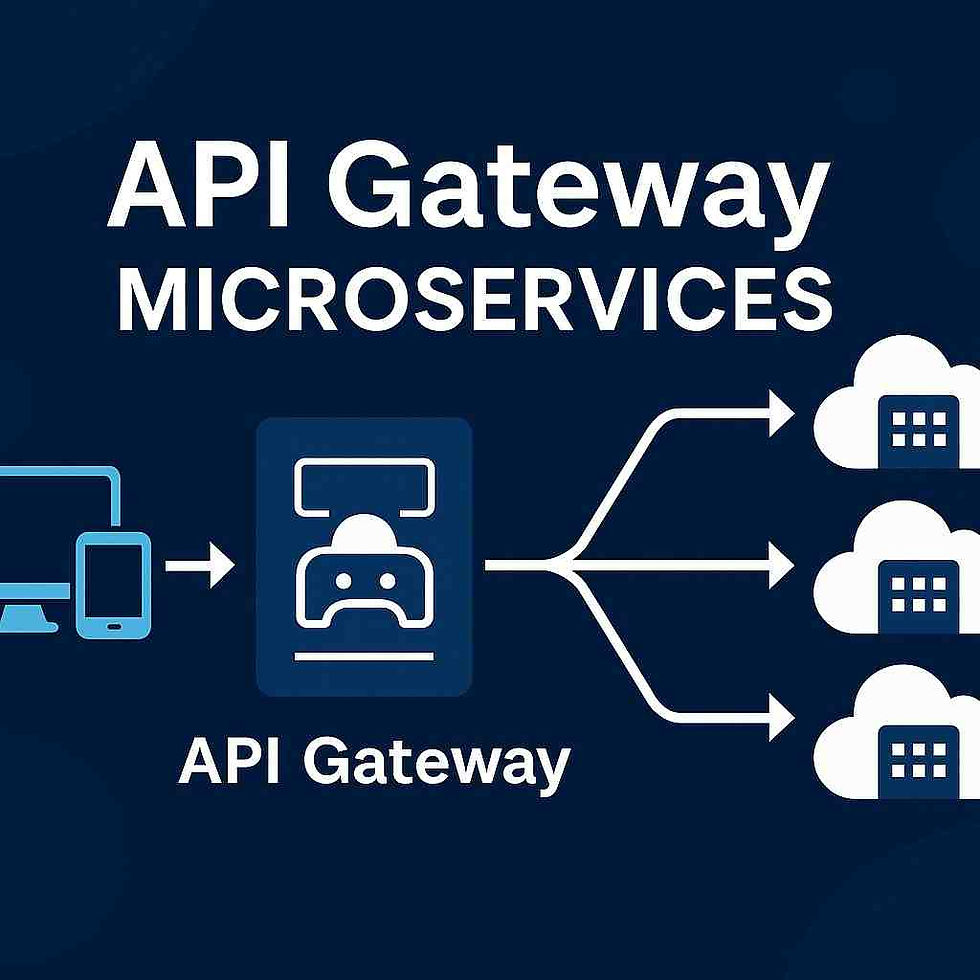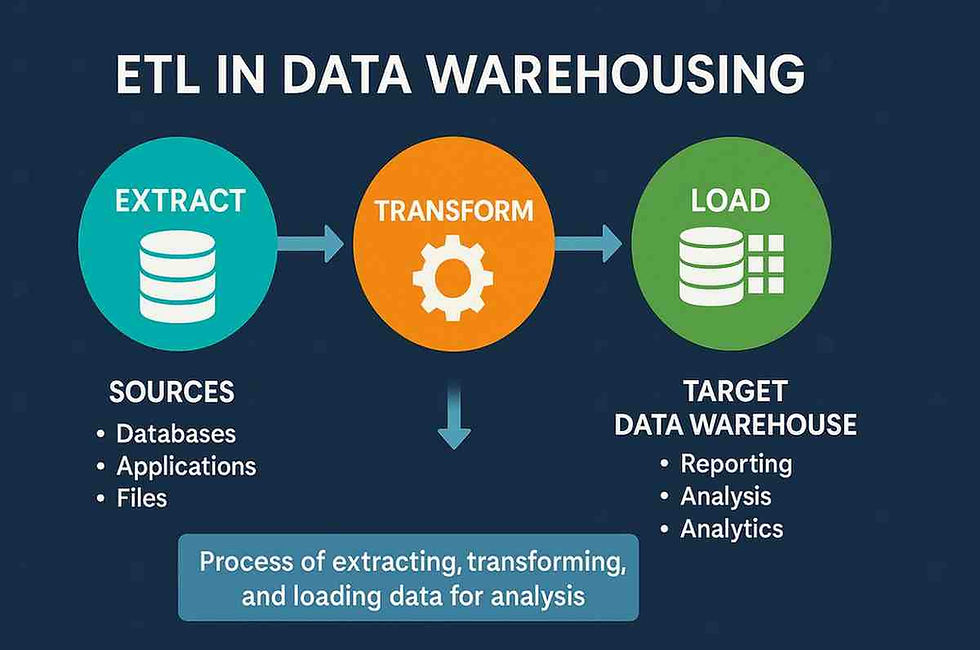Guide to Testing Strategy for DevOps Success
- Gunashree RS
- Sep 23, 2024
- 7 min read
In the fast-paced world of DevOps, where speed and quality are of paramount importance, establishing a robust testing strategy is vital. It serves as a roadmap for ensuring that your software products are reliable, secure, and ready for deployment. Without a well-structured approach, testing can become chaotic, leading to bottlenecks, compromised quality, and delayed releases.
This guide explores the essentials of building an effective testing strategy, with a particular focus on continuous testing, automation, and leveraging the right tools for seamless integration in the DevOps pipeline.
What is a Testing Strategy?
A testing strategy is a plan that outlines the testing approach, resources, timeline, and tools that will be used to ensure software quality. It provides a comprehensive framework that helps DevOps teams manage testing efforts efficiently, ensuring that the product is tested across multiple environments, platforms, and scenarios.
In DevOps, the goal is to automate as much of the testing process as possible to support continuous integration (CI) and continuous delivery (CD). The strategy must also accommodate the rapid release cycles typical in DevOps by focusing on fast feedback and collaboration between development, operations, and quality assurance (QA) teams.

Why is a Testing Strategy Important in DevOps?
The core of DevOps is speed and reliability, but neither can be achieved without a structured testing strategy. A well-defined testing strategy helps in:
Improving Software Quality: By establishing a consistent approach to testing, teams can ensure that each release meets quality standards.
Faster Release Cycles: Automated testing helps in identifying defects early in the pipeline, allowing teams to fix issues before they become larger problems.
Reducing Risk: A structured strategy ensures that security and performance are addressed early in the development lifecycle, mitigating potential risks.
Enhanced Collaboration: A testing strategy encourages communication between developers, testers, and operations, promoting a culture of quality throughout the development process.
Types of Testing in DevOps
Unit Testing
Unit testing focuses on testing individual units of code, such as functions or methods, to ensure they work as expected. This is the first step in the Test Automation Pyramid and is crucial for catching errors early in development. Tools like JUnit and TestNG are popular for unit testing in DevOps.
Integration Testing
Integration testing verifies the interaction between different software components to ensure they work together smoothly. This is essential in DevOps as it validates that the integrated modules function as expected after continuous integration processes.
Functional Testing
Functional testing examines the software's functionality against the specified requirements. It ensures that the application behaves as expected and can be conducted manually or automated with tools like Selenium and TestComplete.
Performance Testing
This testing type measures the system's performance under various conditions, such as high traffic or simultaneous user loads. It helps teams assess if the application can handle production-like environments, identifying bottlenecks before deployment.
Security Testing
Security testing ensures that the application is free from vulnerabilities, protecting it from attacks. It includes penetration testing, vulnerability scanning, and risk assessments, often integrated into the DevSecOps pipeline.
Acceptance Testing
Acceptance testing validates the end-to-end business processes and ensures the software meets user requirements. Tools like Cucumber, based on behavior-driven development (BDD), help bridge the gap between technical teams and business stakeholders.
Key Components of an Effective Testing Strategy
A successful testing strategy in DevOps requires several core components:
Test Automation
Automating tests at various stages of the pipeline is critical to achieving speed and consistency in testing. Automation tools such as Selenium for browser testing or SoapUI for API testing reduce the need for manual testing, speeding up the feedback loop.
Continuous Integration and Continuous Deployment (CI/CD)
CI/CD pipelines ensure that code changes are automatically tested and deployed in a seamless process. Tools like Jenkins and Bamboo support automation in this area, helping teams focus on quality while speeding up delivery.
Test-Driven Development (TDD)
TDD is a development approach where tests are written before code, guiding development to meet specific requirements. Tools like JUnit and TestNG are frequently used for TDD, helping developers identify defects at the earliest stage.
Behavior-Driven Development (BDD)
BDD, facilitated by tools like Cucumber, extends TDD by using natural language to describe test cases. This approach fosters collaboration between technical and non-technical stakeholders, ensuring that the software aligns with business objectives.
Infrastructure as Code (IaC)
Tools like Puppet and Chef automate the configuration and management of infrastructure, ensuring consistency across environments. This is vital for continuous testing, as environments must be consistent for reliable test results.
Popular DevOps Testing Tools
JUnit and TestNG
These are popular frameworks for unit testing in Java, widely used in TDD and BDD methodologies. They allow for repeatable test cases that increase code quality and speed.
Selenium
Selenium is an open-source tool for automating browser-based testing. It’s highly flexible and supports various programming languages like Java, Python, and C#.
Cucumber
Cucumber supports BDD by allowing test cases to be written in natural language, making it easier for business stakeholders to contribute to the testing process.
Bamboo
Bamboo is a CI/CD tool from Atlassian that automates the process of building, testing, and deploying software. It integrates seamlessly with other Atlassian tools like Jira and Bitbucket.
Zephyr
Zephyr provides advanced test management, supporting both manual and automated test cases within a DevOps pipeline. It integrates with popular tools like Jira and Confluence.
SoapUI
SoapUI is designed for API testing, supporting both REST and SOAP services. It allows users to build complex test cases without extensive scripting knowledge.
Best Practices for Implementing a Testing Strategy
Collaborate Across Teams
Foster collaboration between development, operations, and QA teams. Shared responsibility ensures that testing is not isolated and is integrated into the development pipeline from the beginning.
Define Clear Test Metrics
Set measurable goals, such as test coverage, defect density, and test execution time. Tracking these metrics will help teams monitor the effectiveness of their testing efforts.
Focus on Continuous Feedback
Implement feedback loops that provide immediate insights into test results. Continuous feedback helps teams address issues in real time, maintaining the velocity of the DevOps process.
Ensure Test Coverage
Automate tests across the entire Test Automation Pyramid, from unit tests to UI tests, ensuring comprehensive coverage of the codebase.
Challenges and How to Overcome Them
Managing Test Data
Managing large sets of test data can be complex. Use data management tools and automation scripts to ensure that test data is available, accurate, and secure.
Ensuring Test Scalability
As your software and user base grow, so should your testing strategy. Make sure your tests can scale by leveraging cloud environments for testing, and consider tools like Kubernetes for managing large-scale deployments.
Keeping Up with Changing Requirements
In a fast-paced DevOps environment, requirements often change. Adopt an agile testing approach that allows for frequent updates to test cases and ensures your tests remain relevant.
Building a Culture of Testing in DevOps
A culture of testing within DevOps means that testing becomes everyone's responsibility, not just the QA team. Foster this culture by encouraging collaboration, investing in training, and celebrating testing milestones just as you would development achievements.
Continuous integration, automated testing, and continuous delivery should all be underpinned by a robust testing strategy. The entire DevOps team, from developers to operations, must be committed to ensuring that testing is baked into every phase of the pipeline.
Continuous Testing with Puppet or Chef
Tools like Puppet and Chef play a critical role in maintaining consistent environments for continuous testing. By automating infrastructure as code (IaC), they eliminate the risk of “snowflake servers”—those production servers that have been manually configured and thus are unique and difficult to reproduce.
By ensuring that environments are consistent across development, testing, and production, teams can trust the results of their tests. Puppet and Chef automate the configuration of environments, making it easier to run tests in scalable and reliable environments.
Continuous Monitoring with Splunk or ELK
Once applications are deployed, continuous monitoring is essential to ensure they continue performing as expected. Tools like Splunk and the ELK Stack (Elasticsearch, Logstash, and Kibana) help teams monitor system logs in real time.
These tools collect and analyze log data, enabling teams to create dashboards and alerts to track system health, security, and performance. By integrating continuous monitoring into your DevOps testing strategy, you can catch issues in production before they impact users.
Future Trends in Testing Strategies
Looking forward, AI-driven testing, cloud-native testing environments, and increased automation in testing strategies will continue to evolve. AI can help optimize testing processes by identifying the most relevant test cases, while cloud-native environments enable scalability for large-scale tests. Additionally, containerization tools like Docker will allow teams to run tests in isolated environments, ensuring accuracy and repeatability.
Conclusion
A well-defined testing strategy is the backbone of any successful DevOps implementation. It ensures that software quality is maintained, releases are timely, and feedback loops are short. From unit testing and continuous integration to behavior-driven development and infrastructure as code, a comprehensive testing strategy provides the foundation for scalable, reliable, and secure software delivery.
By embracing automation, collaboration, and continuous feedback, DevOps teams can streamline their processes and maintain a high standard of software quality.
FAQs
1. What is the role of automation in a testing strategy?
Automation accelerates testing processes, ensures consistency, and reduces human errors, which is crucial in DevOps where speed is essential.
2. How does Test-Driven Development (TDD) improve code quality?
TDD helps developers write tests before coding, ensuring that the code meets defined requirements from the outset and reducing bugs.
3. What tools are essential for test automation in DevOps?
Key tools include Selenium for web testing, JUnit for unit testing, Cucumber for BDD, and SoapUI for API testing.
4. How can we ensure test coverage across all environments?
Use Puppet or Chef to automate environment setups and ensure consistent test coverage across development, staging, and production environments.
5. Why is continuous feedback important in DevOps testing?
Continuous feedback helps teams identify issues quickly, preventing bottlenecks and ensuring fast resolutions.
6. What is the ELK Stack, and how does it help in continuous monitoring?
The ELK Stack (Elasticsearch, Logstash, Kibana) collects and analyzes log data, providing real-time insights into system performance and security.
Key Takeaways
A well-defined testing strategy is essential for DevOps success.
Automation speeds up the testing process and improves accuracy.
Continuous integration and delivery ensure fast feedback and timely releases.
Tools like Puppet, Chef, Selenium, and Zephyr enhance testing efficiency.
Collaborate across teams to foster a culture of quality and reliability.
Continuous monitoring with tools like Splunk or ELK provides real-time insights into production environments.




Comments